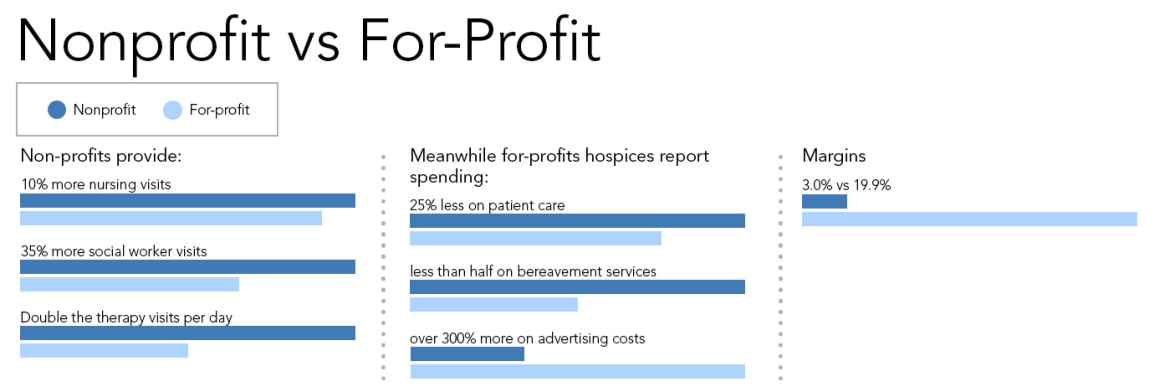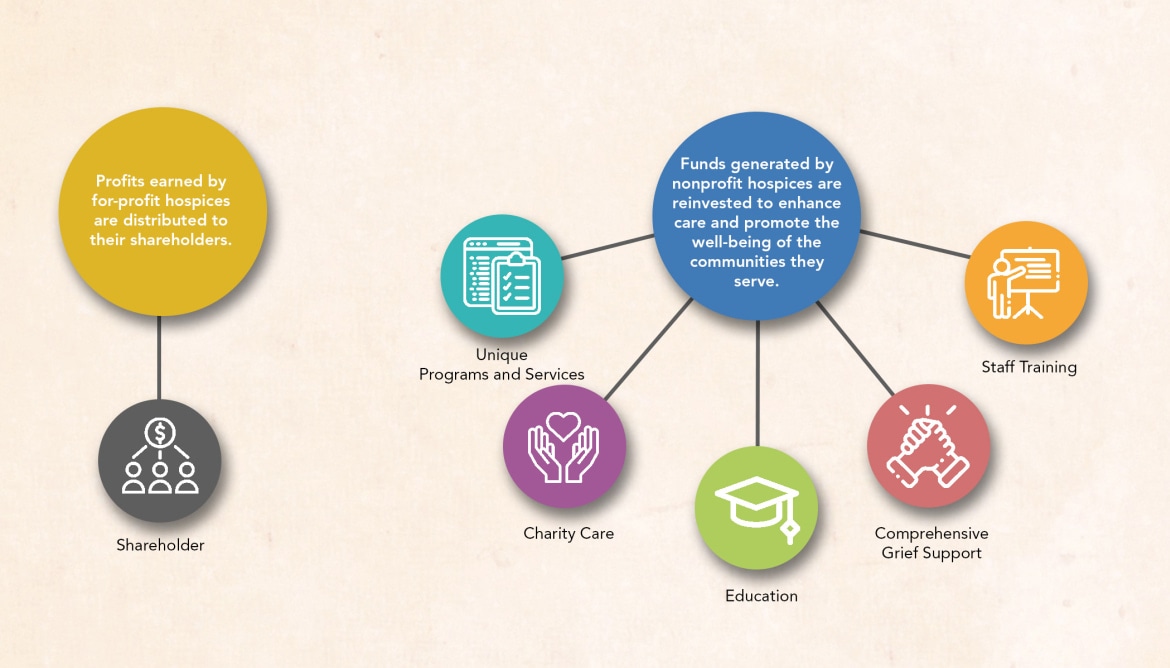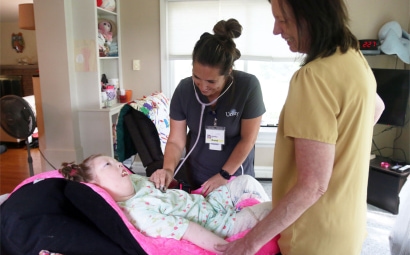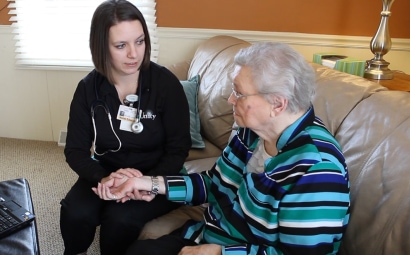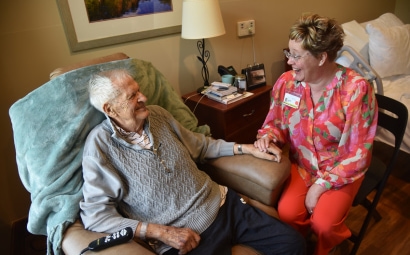What Makes Non-Profit Hospice Care Better Than For-Profit?
When choosing a hospice provider to care for you and your family, it is important to understand the primary motive for their existence. Across the country, hospice providers operate under two different models: nonprofit and for-profit. While both are held to the same basic licensing and regulatory requirements, the way they prioritize resources, measure success, and approach patient care differ greatly. The mission of nonprofit hospice providers is centered on people, not profits. Nonprofits reinvest every dollar earned back into patient care, family support, and community services.
A recent report commissioned by the National Partnership for Hospice Innovation (NPHI) analyzed cost and quality differences between nonprofit and for-profit hospices serving Medicare beneficiaries, using data from FY2017.
Findings from the NPHI Report Highlight the Benefits of Choosing a Nonprofit Hospice
- Nonprofit hospices provided patients with 10% more nursing visits, 35% more social worker visits, and two times as many therapy visits as for-profit hospices per patient day.
- Nonprofit hospice patients received nearly three times as many physician or nurse practitioner visits per patient day than for-profit hospices.
- For-profit hospices have significantly higher margins (19.9%) compared to 3% for nonprofits.
- For-profit hospices spent 300% more on advertising than its nonprofit counterparts.
- For-profits spend 25% less on direct patient care than for-profits.
- The live discharge rate was 21% for for-profit hospices compared to 12% for nonprofits. Although some patients do get better and therefore no longer need hospice, a high live discharge rate may indicate that patients are pushed out when their care becomes expensive or that they are dissatisfied with their care.
- The patients discharged alive from for-profit hospices incurred 40% higher Medicare Part A costs in the two weeks after discharge, which indicates that the hospice would have incurred high costs to care for them had they not been discharged.
- Nursing care costs per day per patient for nonprofits were $41.21 compared to $27.88 for for-profits.
- Nonprofits spent more on non-reimbursable costs, such as bereavement services, volunteer programs and palliative care programs.
Why Are There Differences Between Nonprofit and For-Profit Hospices?
For-profit hospice providers are in business to make money and pay dividends to stockholders. While many employ caring professionals, their primary obligation is to grow profits. For-profit hospices often seek to increase profits by lowering operational costs, which involve reducing the frequency of patient visits, decreasing staffing ratios, and limiting expenditures on patient care services such as grief support and specialized programs that are not reimbursed by Medicare and insurance. They worry more about the cost of caring for a patient rather than the care they are providing.
Nonprofits are formed to fulfill a compassionate mission and measure every financial decision by asking, “is this the right thing for the patient and family?” and not, “is this the right thing for the shareholder?”
Choosing the Right Hospice
When choosing hospice care, consider what matters most:
- People over profits (holistic well-being over financial gain)
- Highest quality standards in patient care
- Wide selection of specialized programs for optimal quality of life
- Highly trained and experienced staff
- Timely response
- 24/7 access to care
- Charity care of under- or uninsured
Choose nonprofit, mission-driven care. Choose Unity, Northeast Wisconsin’s first and most trusted nonprofit hospice choice for more than 48 years.
Access Our Toolkit of Resources
- How Hospice Helps
- Hospice Myth vs Fact
- Signs to Start Hospice Care
- Hospice Comparison Checklist
- Grief Support Comparison Checklist

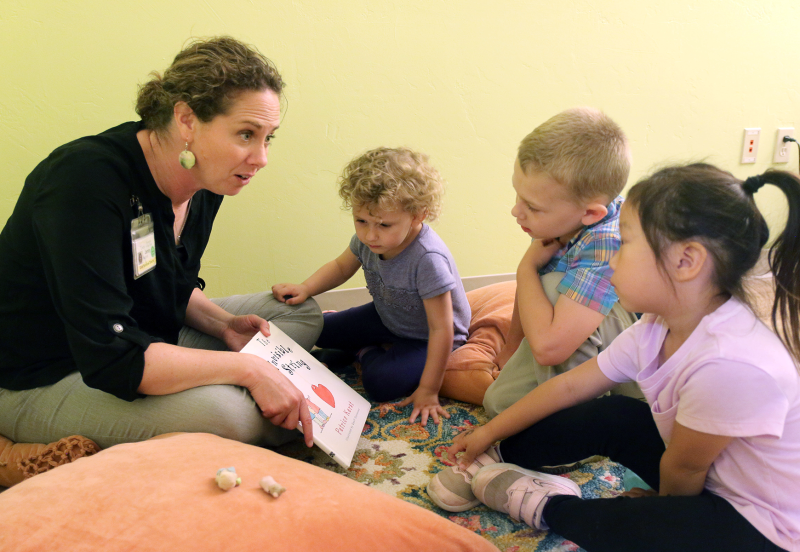
Extensive Grief Support Services Matter
It is important to ask a hospice provider if they have a robust bereavement and grief support program.



